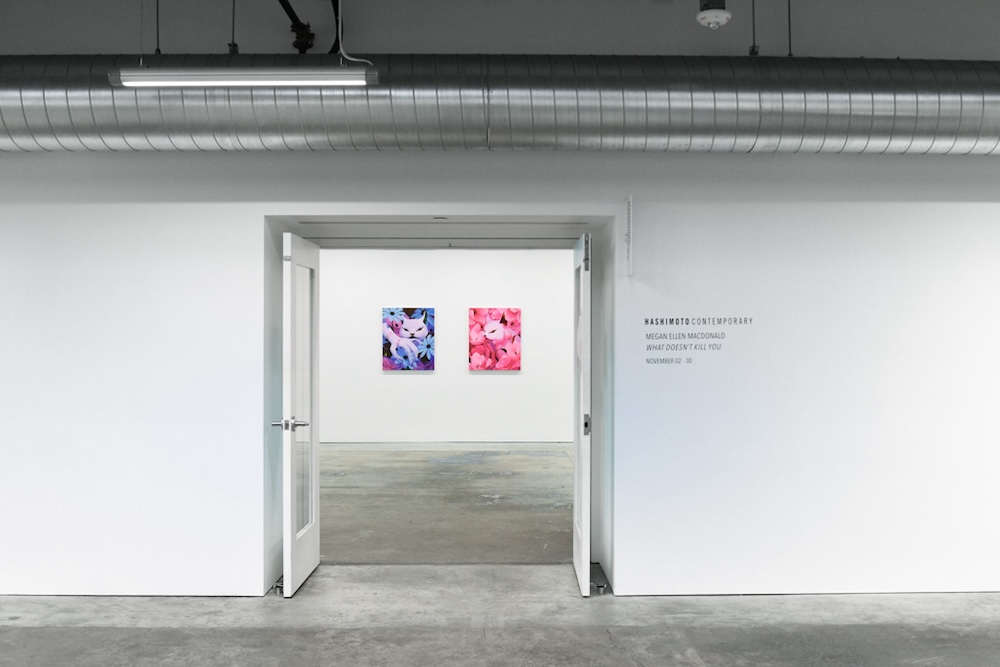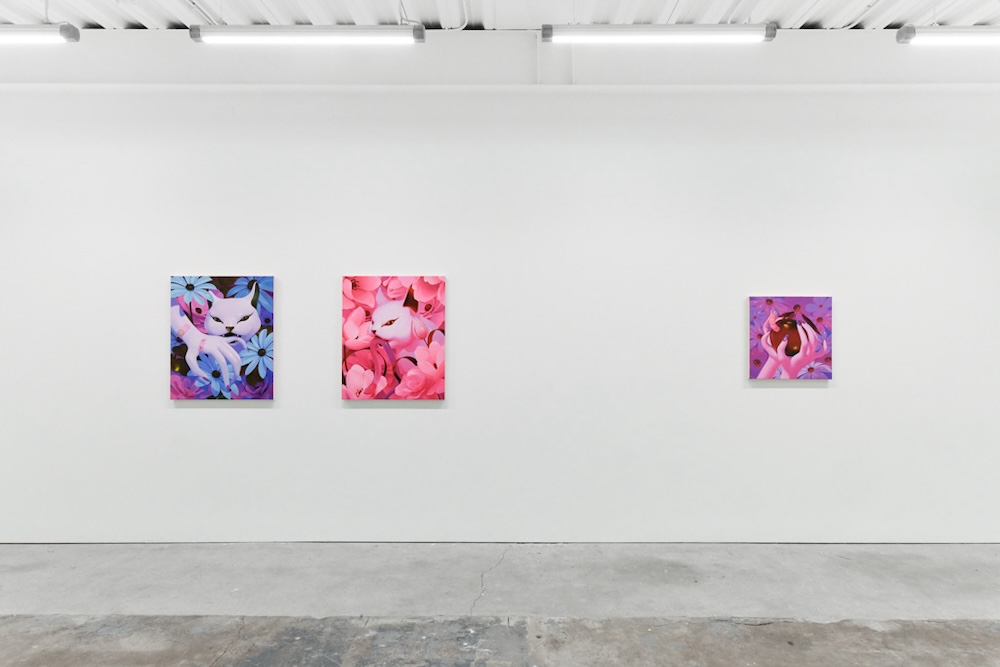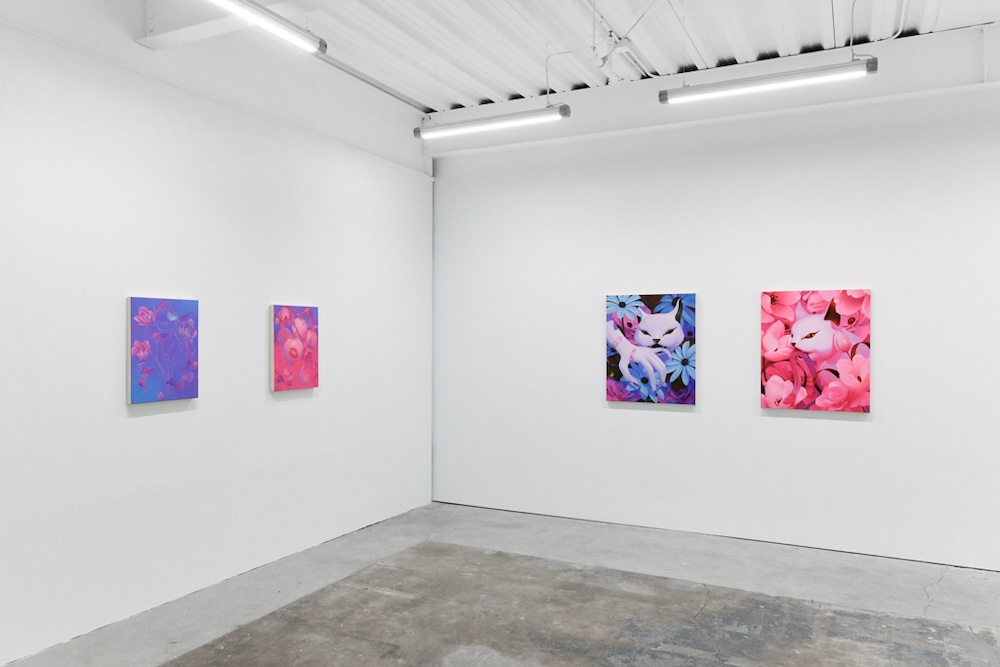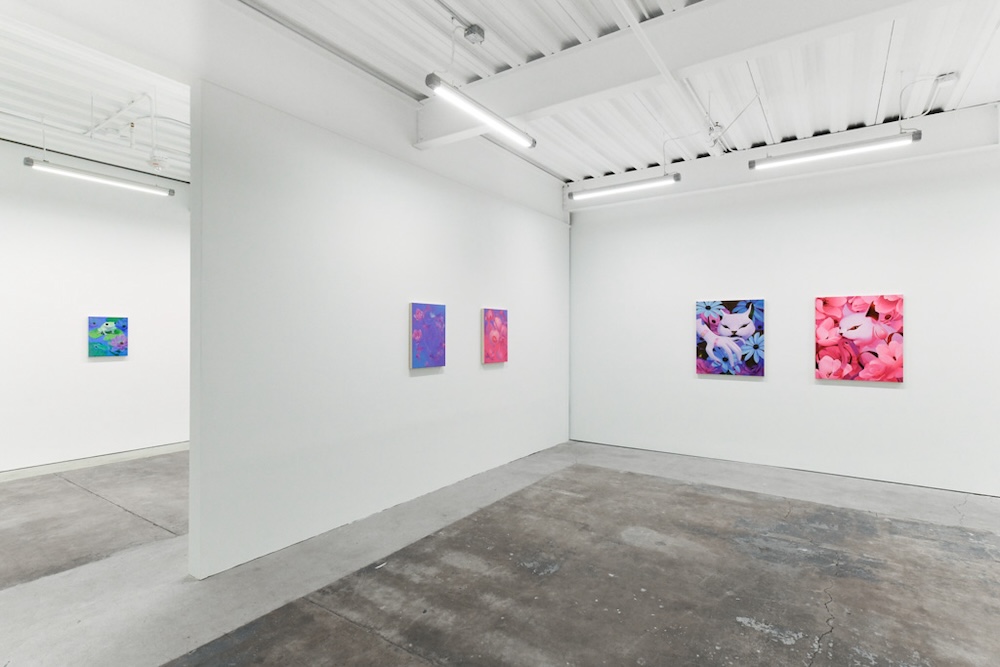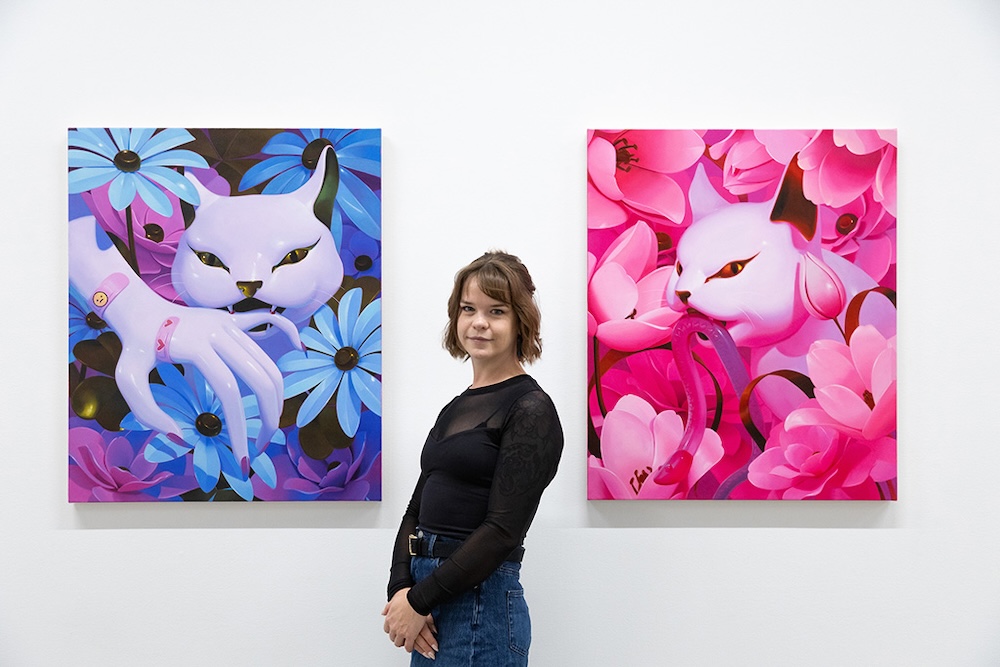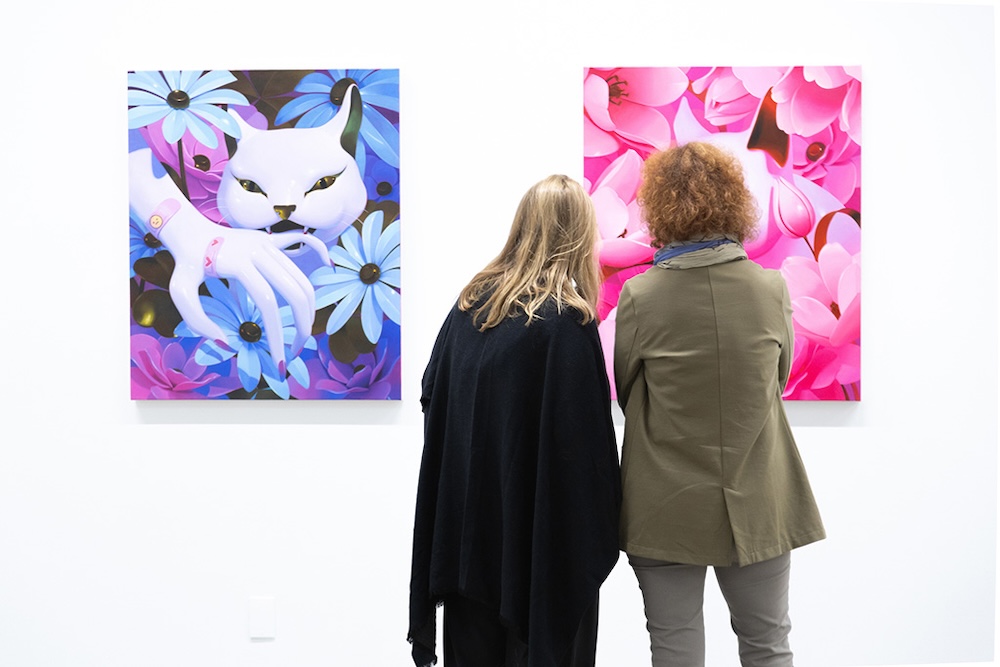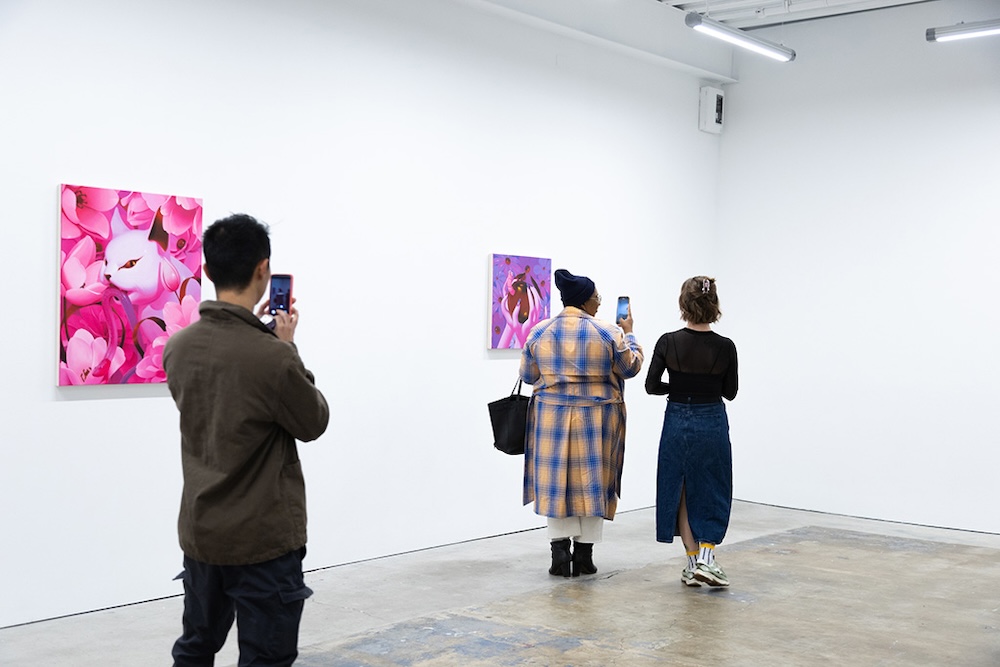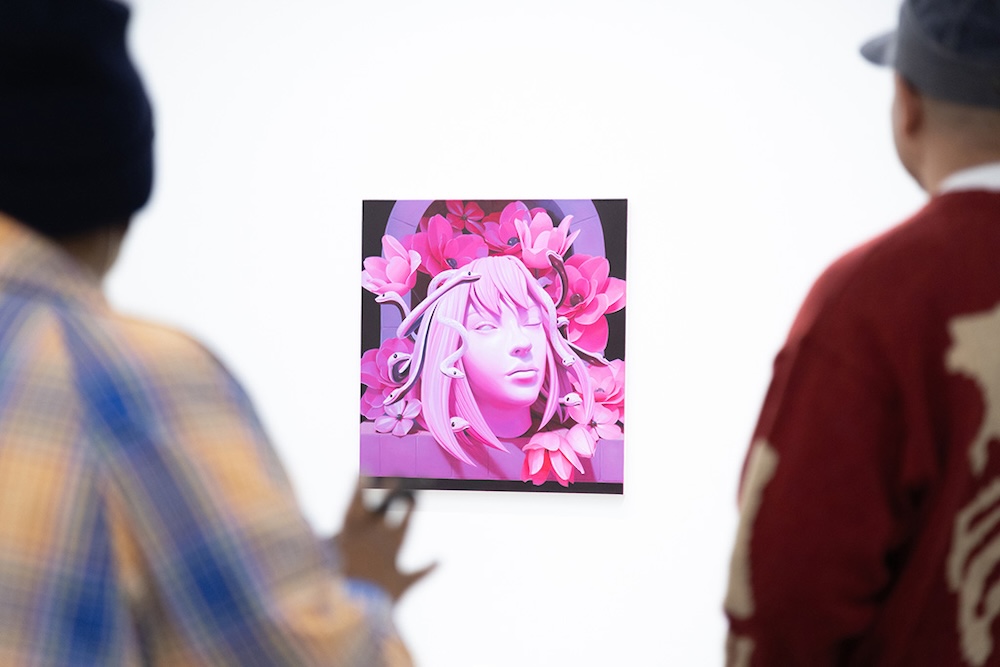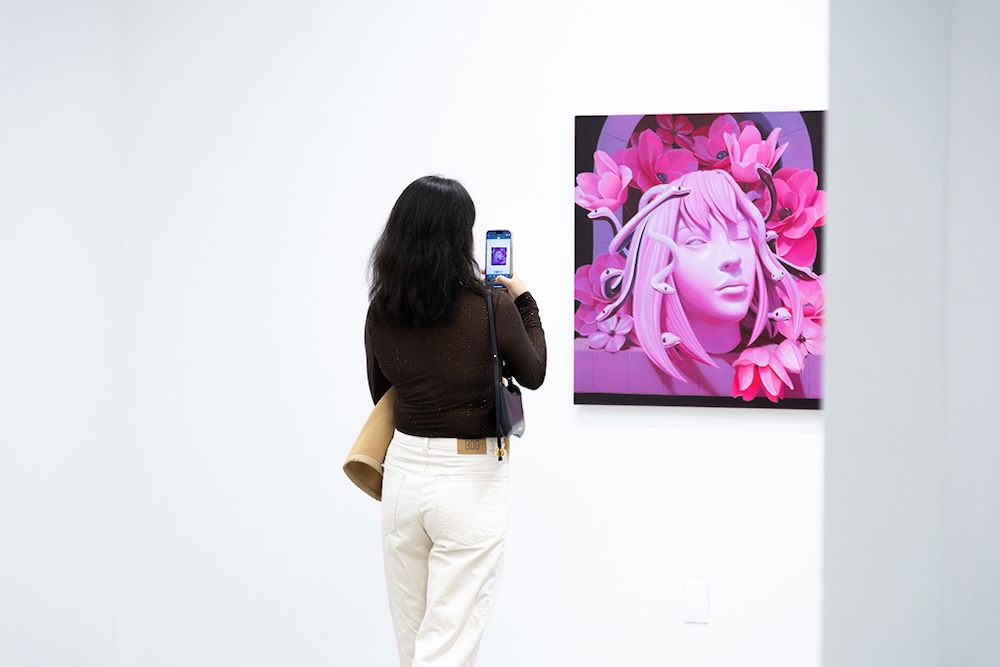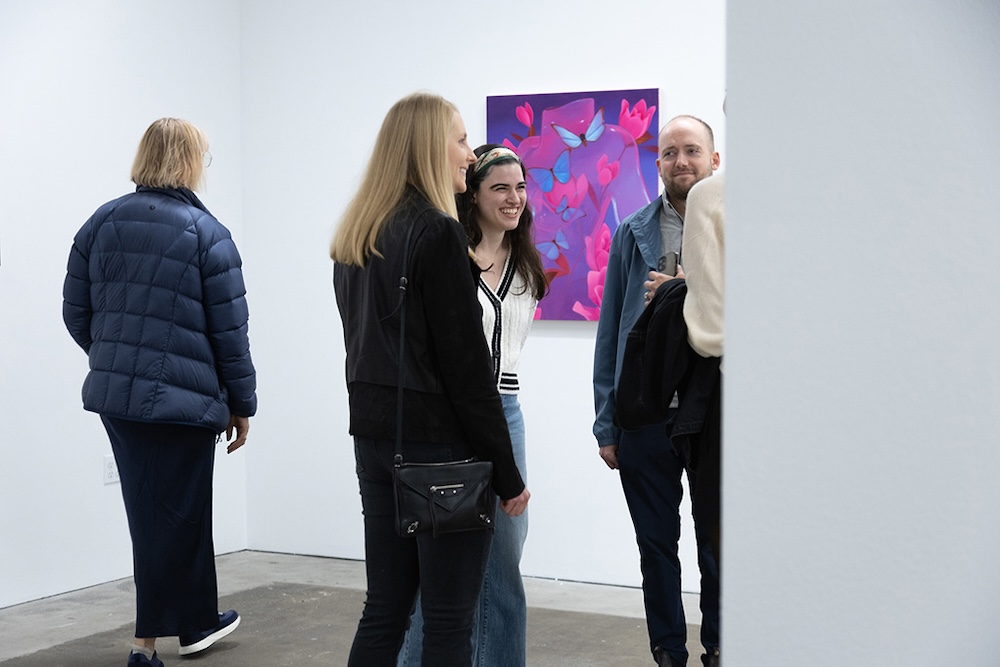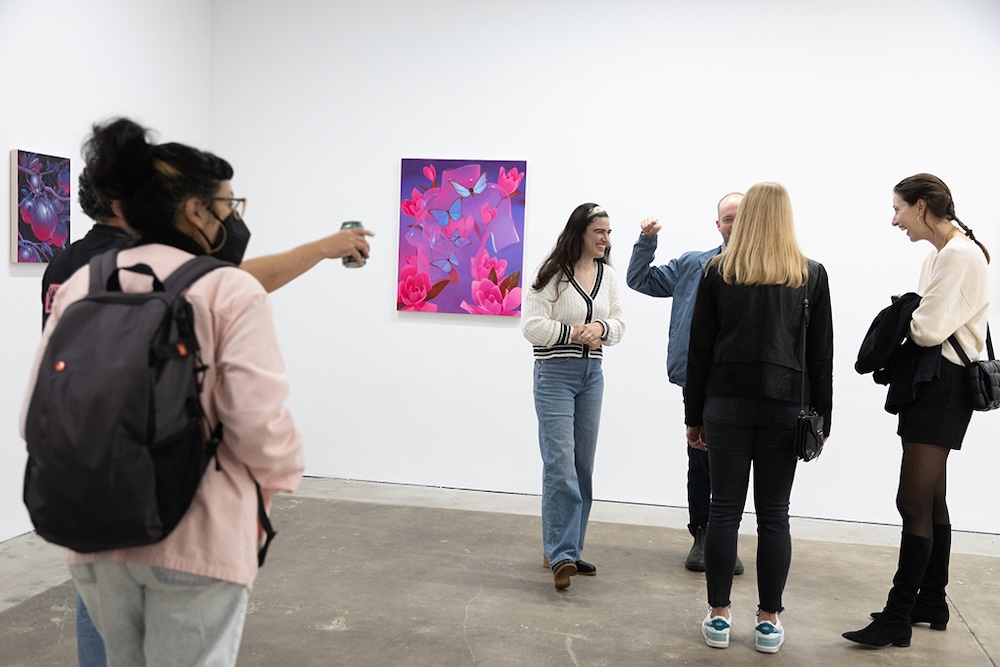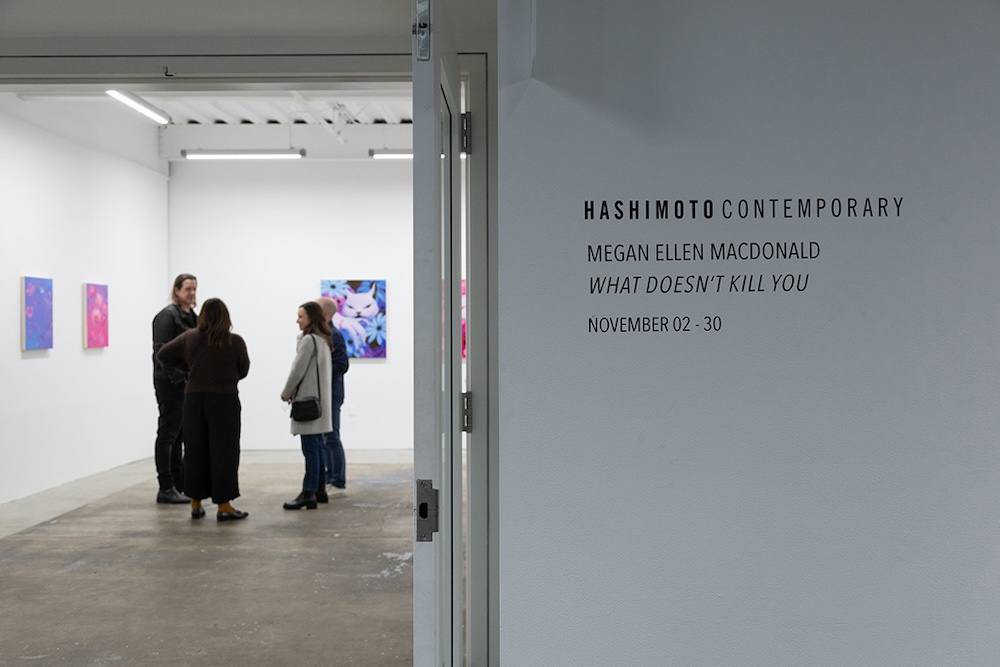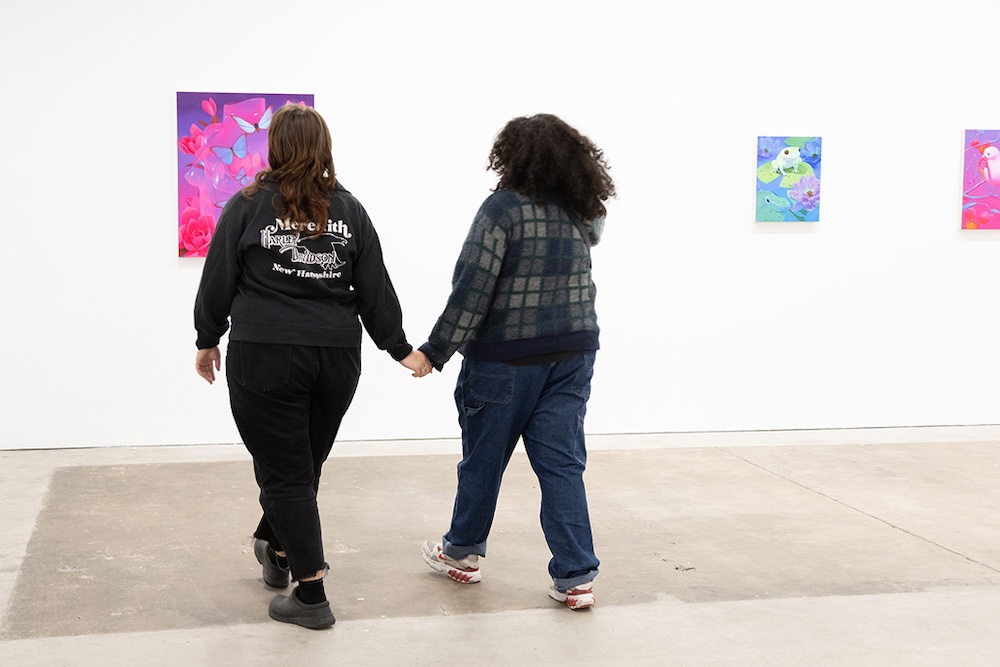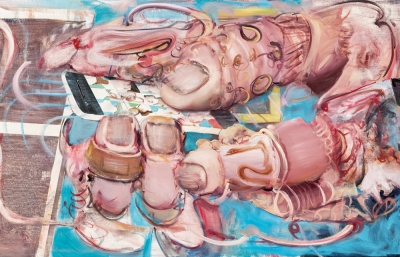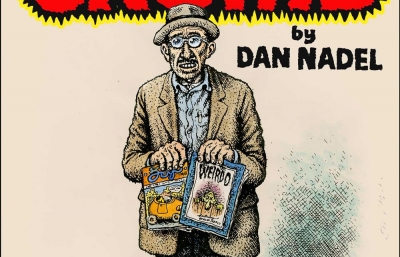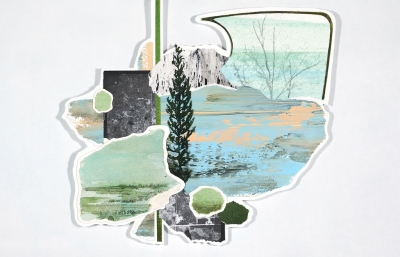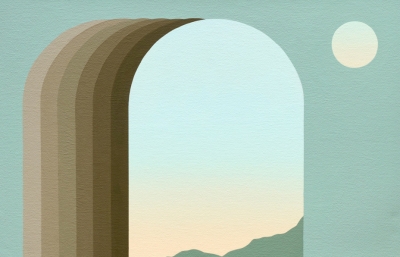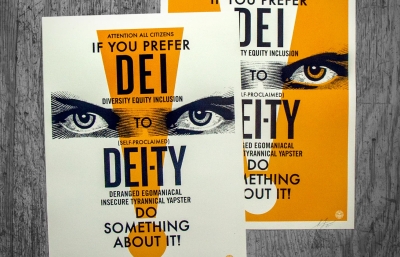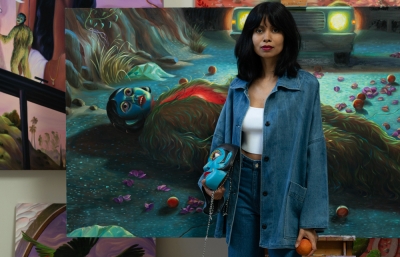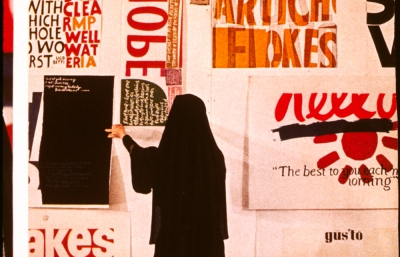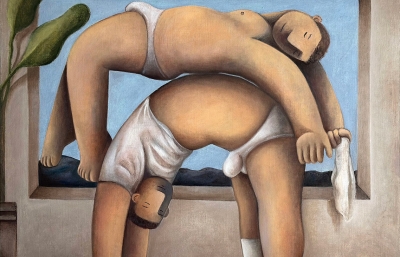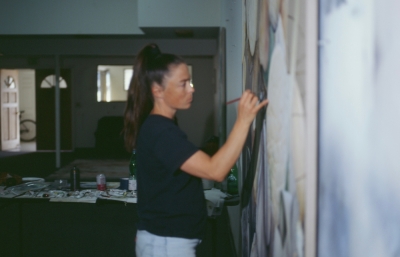As Hashimoto Contemporary San Francisco was set to open Toronto-based painter Megan Ellen MacDonald's newest solo show with the gallery, What Doesn't Kill You, they sat down to discuss the ideas of cuteness, creepiness and kitsch.
Dasha Matsuura: You’ve been exploring what it means to lean into a femme aesthetic in your work for some time, but something particular to this new exhibition is an investigation into “cute” aesthetics and a subversion of expectations from these subjects. You had also mentioned that the section on “Cute” in Sianne Ngai’s book on aesthetic judgments and the origin of taste, Our Aesthetic Categories: Zany, Cute, Interesting, was a catalyst into this subject matter. To start, can you say more about your interest in “cute” aesthetics and how you feel this new series of paintings subverts that subject matter?
Megan Ellen MacDonald: I’ve been exploring the concept of a femme aesthetic for some time, particularly the interplay between objectification and power. Sianne Ngai’s essay on cute has been a major inspiration for this exploration, and while my earlier work focused on commodifying the sublime and grappling with heavier themes like memento mori through a kitschy lens, this new body of work takes a slightly different approach.
In this exhibition, I continue to embrace the playful, hyper-girly aesthetic I’ve developed in previous works, but I’m turning the lens inward to examine the contradictions inherent in cuteness itself. Cuteness is so interesting because it is inherently unstable. It amplifies diminutive qualities but is also highly malleable. This duality allows for a nuanced exploration of power dynamics - where the seemingly innocuous can simultaneously disarm and manipulate.
There are lots of animals in these new paintings. Some classically “cute” animals like butterflies, cats, small birds, but also some who might not traditionally fit the bill, like spiders and worms. Were you trying to cute-ify these creatures or make them more palatable? How do they fit into this new series, and what role do they play in complicating cuteness?
One of the key takeaways from Ngai’s essay on cuteness is that this aesthetic evolves from a desire to strip subjects of any threatening qualities, rendering them helpless. I like to think this perspective can apply to a wide range of creatures, even those that might not traditionally be seen as cute, like spiders and worms.
Take the worm, for example. I find it to be a really great embodiment of complicated cuteness. The meme “Would you still love me if I turned into a worm?” captures this idea perfectly. It presents a narrative where a girl transforms into a vulnerable worm to seek attention and affection, embodying the intersection of cuteness and pity. This dynamic reflects a deeper truth: the fetishization of helplessness can actually subvert the power balance between observer and subject. By including more “ugly-cute” creatures in the new work, I aim to explore these complexities, highlighting how cuteness can sometimes deceive and complicate our understanding of power dynamics.
Speaking of which, your works are quite uncanny. Part of this, you’ve acknowledged, is because you create the scenes in 3D modeling software first, so they look like objects from our world but one step removed. But certain elements go beyond uncanny to border-line creepy: the spiders, the long itchy fingers and nails, the dark shadows looming behind each scene. Where do you think this creepiness is coming from?
The creepy element is a tension I intentionally tried to evoke in this new body of work. The 3D process I use to compose my reference images amplifies this effect, allowing me to blur the lines between tactile allure and unsettling coldness. In my previous works, the textures and forms were attempting to amplify the commodification and objectification of the subject matter, but in this series, I’ve started to manipulate the forms and textures further away from something comfortable, where they start to feel like they could be both threatened and threatening. By straddling that line, I want viewers to not just sense the uncanny, but feel a mixture of attraction and discomfort towards the subjects.
I was also curious about the kitsch discrimination you’ve faced in your career—you had said that often people around you would tell you your work was too kitsch. But kitsch, to me, feels like an integral part of the aesthetics we consume daily, and it has a permanent seat at the art historical table. I’m curious why you think these people were so upset about you depicting kitsch, femme subjects.
I think kitsch is a vital expression and response to the evolution of beauty in the 21st century. Any pushback I’ve faced regarding kitsch in my work often stems from a very antiquated definition of beauty in painting, which is predominantly male-defined, and focused on the sublime. My work intentionally embraces kitsch, but it’s not meant to be taken at face value. There’s a nuanced complexity behind it that I believe is sometimes overlooked. I’m not presenting sincerity - I’m rebelling against conventional notions of beauty and the sublime. In contemporary culture, beauty has evolved, been manipulated, commodified, and weaponized. I don't think my work necessarily upsets people, but it confuses some, as it questions their definition of high and low forms of art and expression.
Lots of things appear translucent in this new series of works, like butterfly wings or flower petals. Since you’ve been painting for so long and honing your technique, I’m curious how you try to keep your work fresh and interesting for yourself without losing your signature style or veering away from what makes your artwork so appealing in the first place.
One of the aspects I really love about having a process that bridges traditional oil painting techniques with 3D is that both mediums allow me to explore texture and light in an almost limitless way. Initially, I focused on making textures ambiguous - it was unclear if they were plastic or organic. Now, I’m aiming to create more tension by shifting the material further from their origin - instead of soft, organic materials I’m using rigid, complex textures like glass and metal. I want to challenge the viewer’s expectations of texture versus what’s depicted in the artwork. There’s so much possibility in that alone, and I feel like I’ve barely scratched the surface with how far I can take that, in both 3D and painting.
There are certain still life subjects that have appeared repeatedly in your work over the years—peaches, oysters, pearls, heart-shaped oranges, little birds, skulls. What draws you to reshape and return to these particular animals and foods with each exhibition?
Artists tend to repeat subject matter as a way to explore meaning within those subjects. I repeat subjects in my work as a way to create new meaning within old forms. The subjects, such as peaches, lemons and oysters, have been part of the still life genre for centuries, each carrying its own layers of meaning and symbolism that shifts and evolves over time. I find that revisiting sensual and feminine imagery allows me to treat these subjects like a language. The more I engage with them, the more I can infuse new meanings into their familiar forms.
Speaking of still life elements, you’ve always stated how the Dutch Still Life painting has influenced you down to your painting techniques, also because it was an era where women painters were able to lean into painting in a more “feminine” style. Do you still see this era and genre of painting as influential on your work? Are there certain works in particular you return to again and again? Is there anything that influences you now that viewers might find odd or surprising?
The Dutch Golden Age of Still Life continues to be a significant influence on my work, both conceptually and technically. What made still life work of that century so impactful was how masterfully the artists were able to articulate varieties of textures within the work, and create something so engaging and full of energy, but on a macro scale. In keeping with my focus on the diminutive, still life is one of the few genres that ignores the sublime and instead focuses on the domestic. When you look at my own work, everything exists on the same small, intimate scale. Not all of my works are composed as a traditional still life, but they all reference the scale and intimacy of works from the Dutch Golden Age. More recently, I’ve been looking at a lot of works by Otto Marseus, whose works feature snakes, lizards, and spiders depicted from a tight, low perspective, as if revealing a hidden world beneath the surface.
In addition to being a full time artist, you’re also a painting teacher. What’s the hardest lesson to teach someone about painting?
Teaching the technical elements of painting isn't hard, but being an artist is something that can’t be taught. It’s a mix of equal parts skill and belief, and as an instructor I want to encourage students to think for themselves and follow their passion, while also giving them the tools and techniques to execute their vision. You have to have a gentle hand, and it’s a delicate balance trying to encourage without over-influencing someone.
What’s something you think is cute that someone else might disagree with?
I find a lot of things cute that someone else might not. One of the oddest examples would be fishing lures, which actually appear in one of my pieces for the exhibition. After seeing Duke Riley’s Death to the Living, Long Live Trash at the Brooklyn Museum last year, I became inspired to create my own. I enjoy fishing as a hobby, and I’ve accumulated a whole collection of lures that I bought on impulse because I thought they were cute - especially the pink, sparkly ones with big ol’ googly eyes. Riley’s lures made from trash really caught my attention, particularly the tampon lures, as they embodied a femme-coded aesthetic in a predominantly male space. I want to explore that same idea by crafting my own femme lures and maybe even making them functional.
Finally, the title of the exhibition is What Doesn’t Kill You. The proverb we all know usually ends with “makes you stronger.” For you, for this exhibition, how does the sentence end?
I intentionally left the sentence open-ended, and I think that ambiguity is essential to the focus of the work. There’s no fun in absolutism, and removing the conclusion adds a layer of tension that resonates with the overall tone of the show.
What Doesn't Kill You is on view atHashimoto Contemporary San Francisco through November 30, 2024

